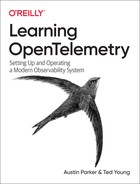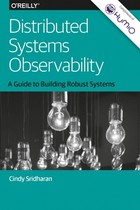OpenTelemetry (OTel) has emerged as the de facto standard for application observability, promising unified telemetry collection across traces, metrics, and logs. However, as organizations scale their OTel implementations, they're discovering an uncomfortable truth: comprehensive observability can come with eye-watering costs that challenge the very value proposition of modern monitoring.
The Cost Reality Check
The promise of OpenTelemetry is compelling—unified, vendor-neutral observability that provides deep insights into application behavior. Yet real-world implementations often result in sticker shock. Organizations report monthly bills ranging from thousands to tens of thousands of dollars, particularly when using cloud-based observability platforms that charge based on data ingestion volumes.
The root cause isn't just the volume of data, but the verbosity of OTel's data format. Traditional log entries that might consume a few hundred bytes can balloon to several kilobytes when wrapped in OTel's structured format, complete with metadata, context propagation, and semantic conventions.
Strategic Cost Management Approaches
1. Intelligent Sampling and Filtering
The most effective cost control mechanism is implementing smart sampling strategies. Rather than collecting every trace or log entry, organizations can:
- Dynamic sampling: Increase collection rates during deployments or incident response, then scale back during stable periods
- Error-focused retention: Prioritize traces and logs associated with errors or performance anomalies
- Random sampling with aging: Progressively reduce data retention over time while maintaining statistical significance
2. Adaptive Log Level Management
Production logging doesn't need to be all-or-nothing. Implementing context-aware logging allows teams to:
# Example OTel configuration for adaptive logging
processors:
filter/production:
logs:
log_record:
- 'severity_number < SEVERITY_NUMBER_WARN'
probabilistic_sampler:
sampling_percentage: 1.0 # 1% sampling for normal operations
3. Retention Policy Optimization
Most debugging scenarios require recent data. A tiered retention strategy might include: - High-resolution data: 7-30 days for immediate troubleshooting - Aggregated data: 90 days for trend analysis - Critical incidents: Long-term storage for compliance or post-mortem analysis
The Self-Hosting Alternative
Cloud observability platforms offer convenience but at a premium. Self-hosting open-source solutions like Grafana, Jaeger, and Prometheus can dramatically reduce costs, though it shifts the burden to infrastructure management and operational overhead.
Industry-Specific Considerations
Regulated industries face additional complexity. Financial services, healthcare, and other compliance-heavy sectors often require extended log retention, making cost optimization more challenging. These organizations must balance regulatory requirements with operational expenses, often leading to hybrid approaches that prioritize compliance data while aggressively sampling operational telemetry.
The Tooling Evolution
The observability ecosystem is responding to cost concerns. New tools and platforms are emerging that offer: - Compression-optimized storage: Reducing the storage footprint of telemetry data - Edge processing: Pre-aggregating and filtering data before transmission - Cost-aware sampling: AI-driven sampling that maintains observability quality while minimizing volume
Looking Forward: The Efficiency Imperative
The OpenTelemetry cost challenge represents a broader industry inflection point. As observability becomes mission-critical, the community must evolve beyond "collect everything" mentalities toward intelligent, cost-conscious approaches that maintain visibility without breaking budgets.
Organizations that master this balance—implementing sophisticated sampling, optimizing retention policies, and choosing the right mix of cloud and self-hosted solutions—will gain competitive advantages through both superior observability and cost efficiency.
The question isn't whether to adopt OpenTelemetry, but how to implement it sustainably. The winners will be those who treat observability cost optimization as an engineering discipline, not an afterthought.














